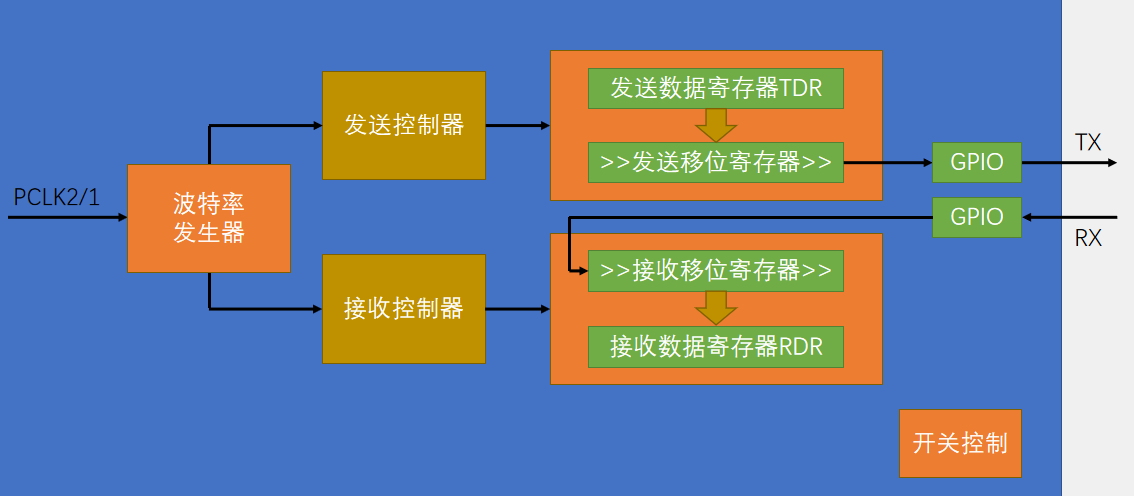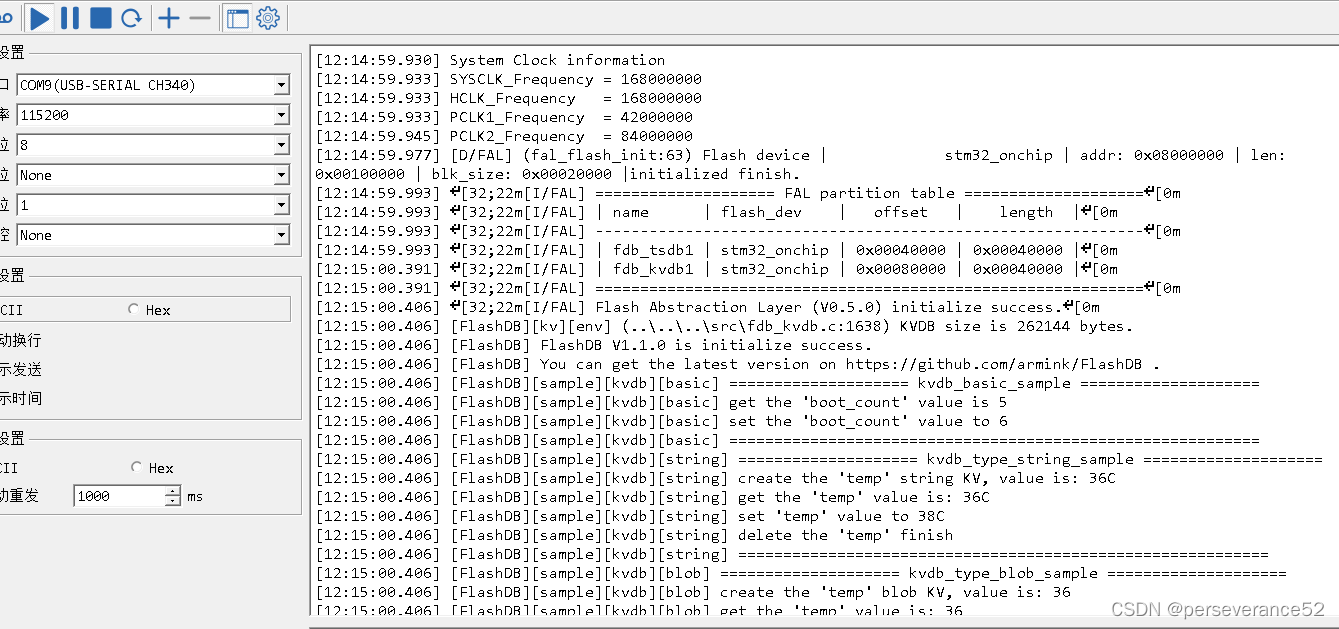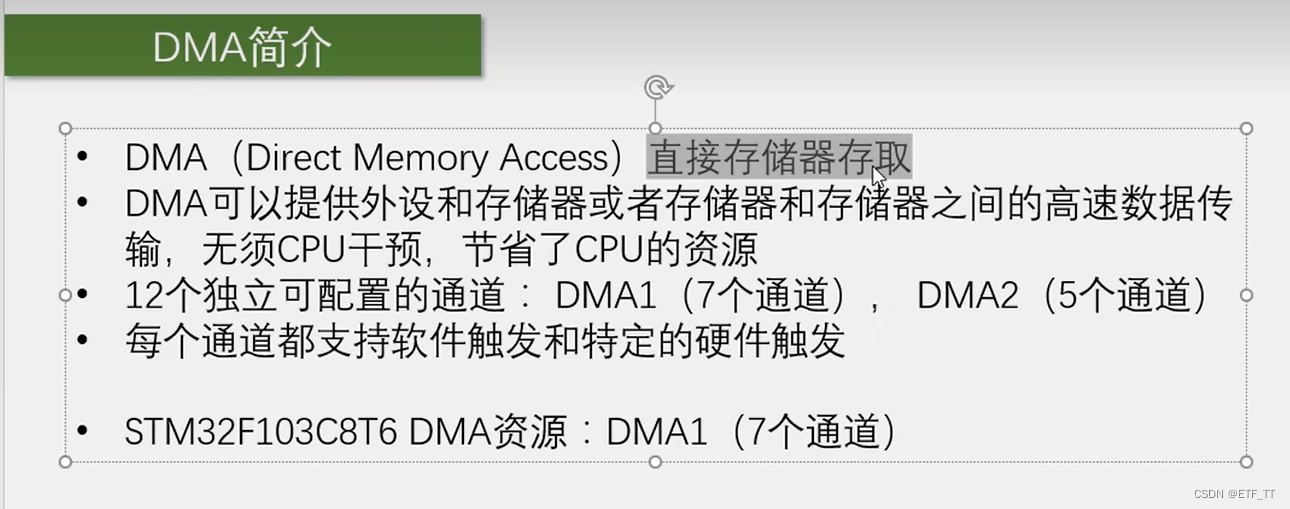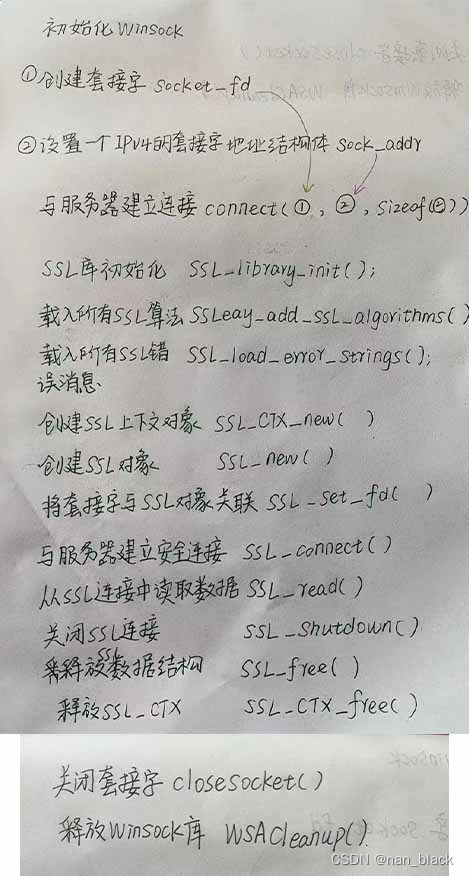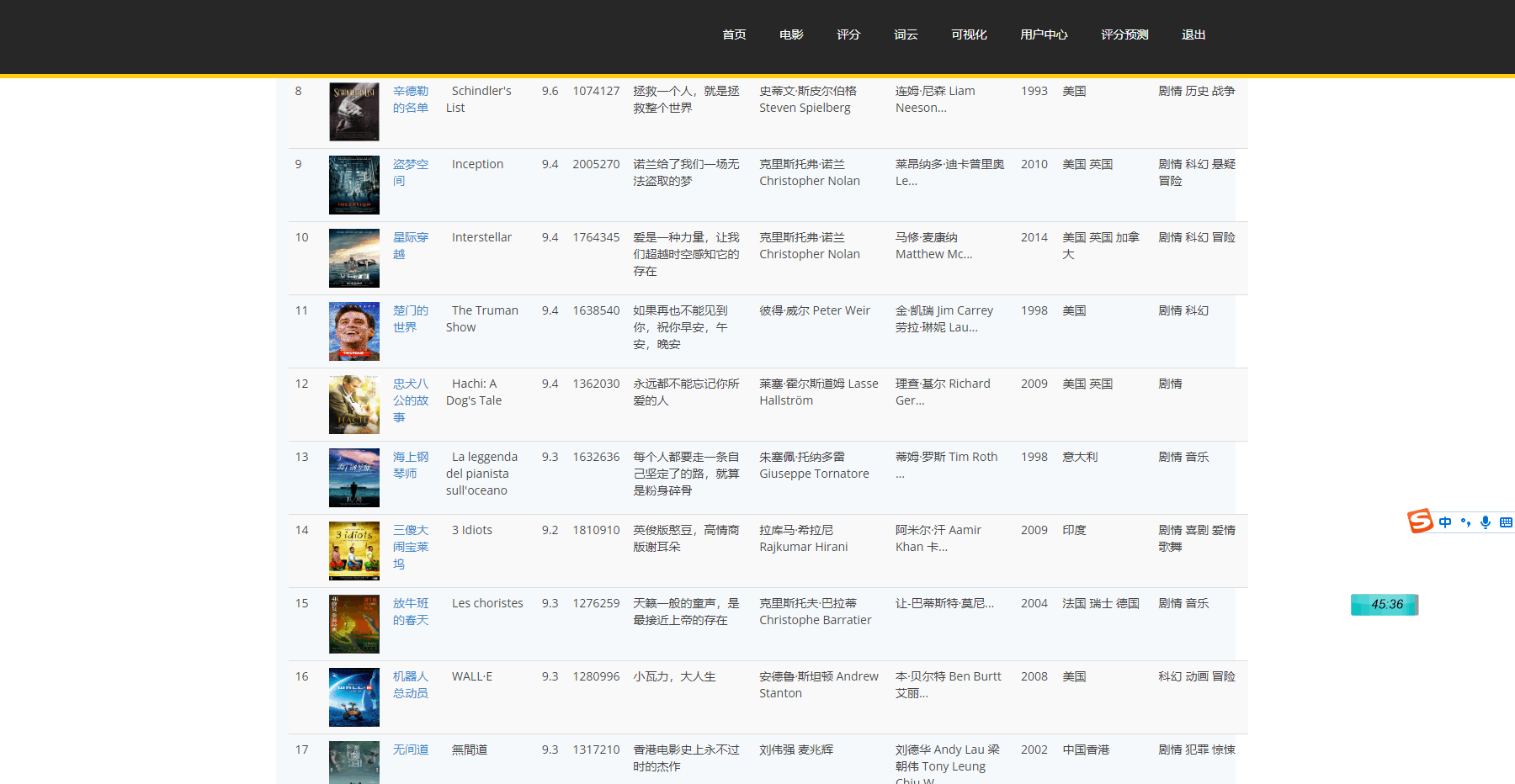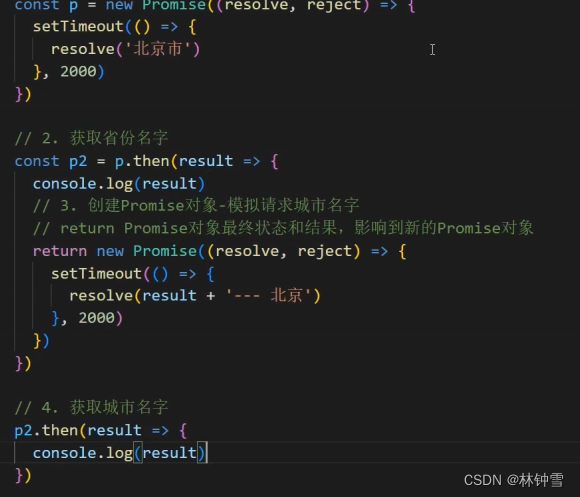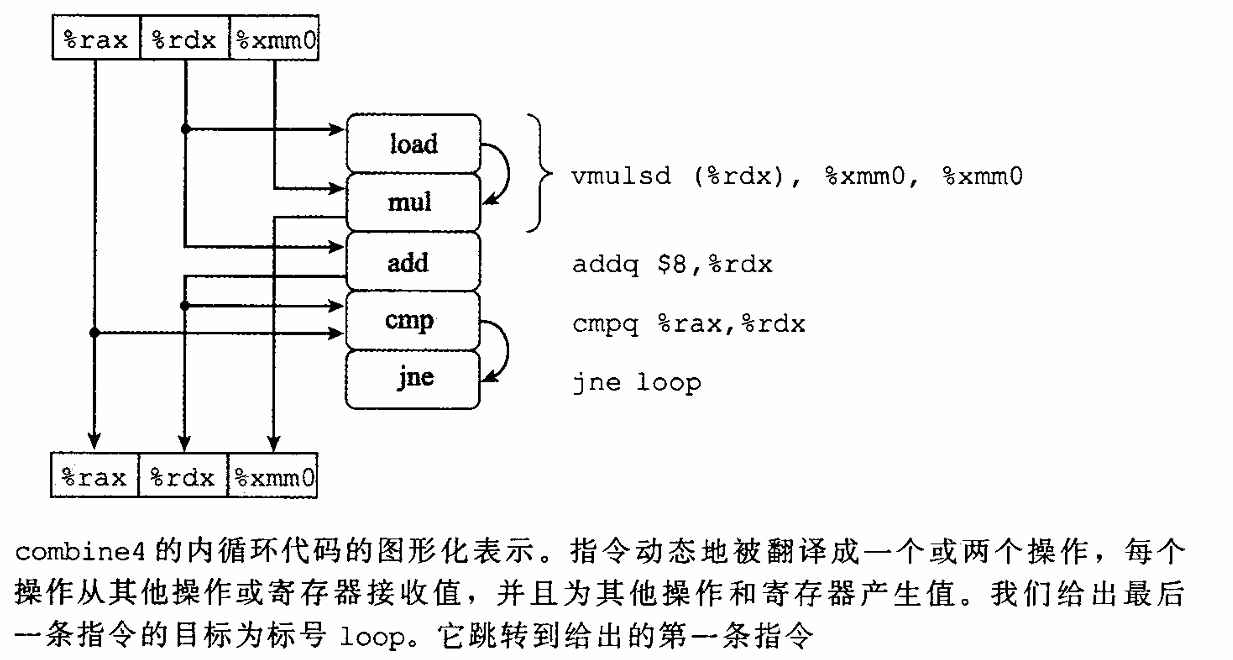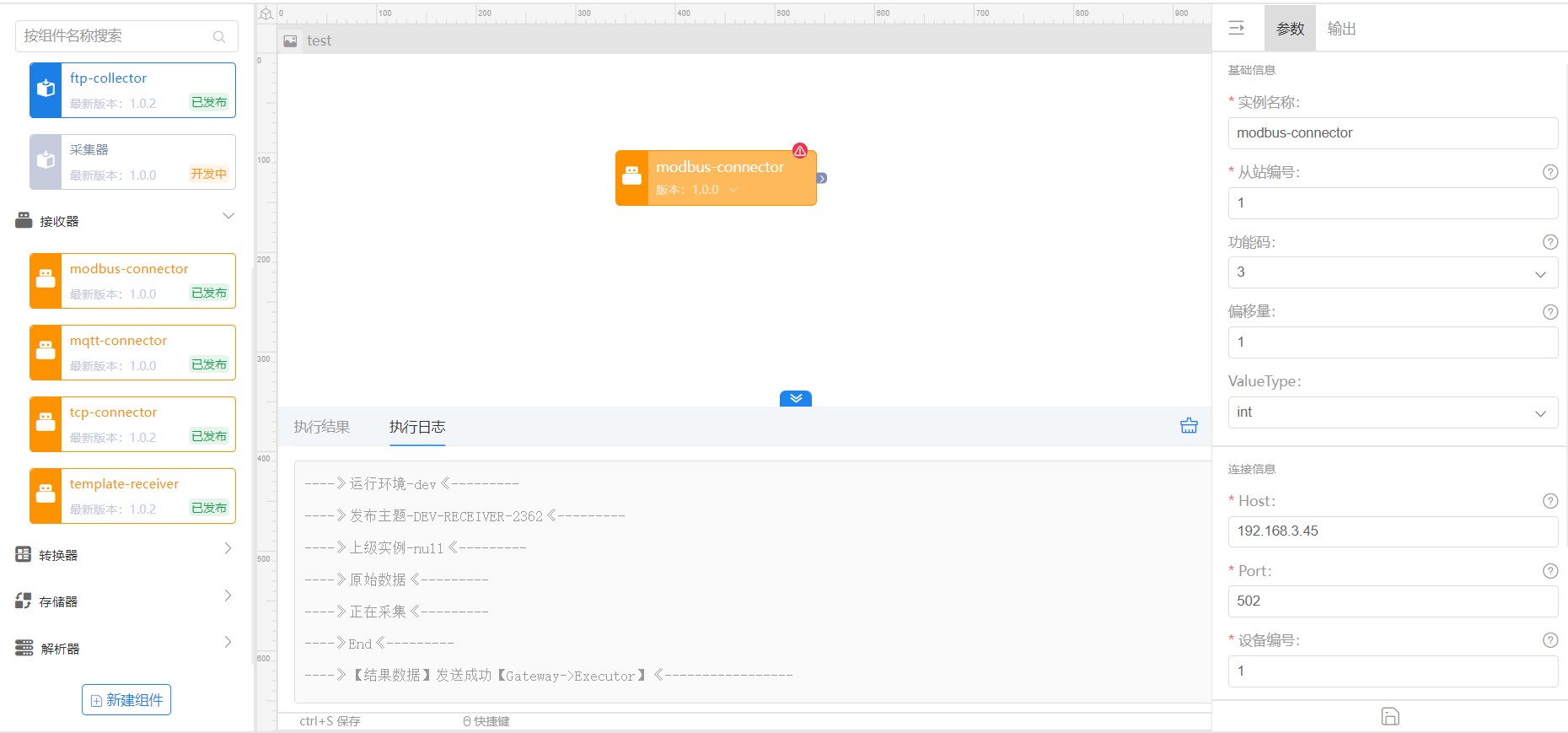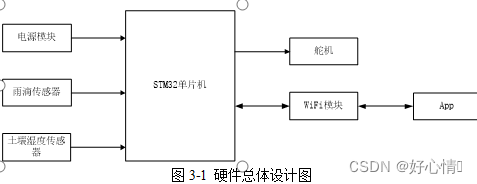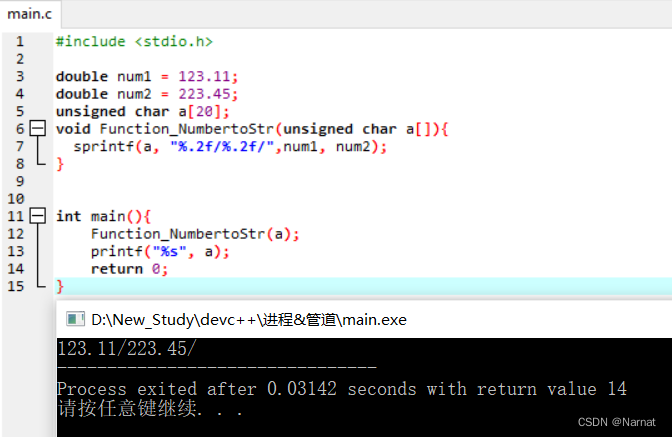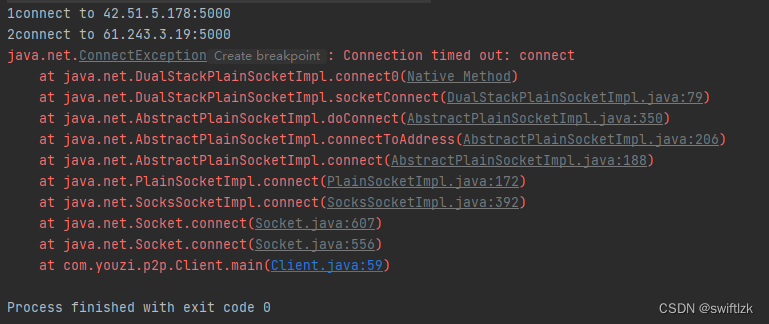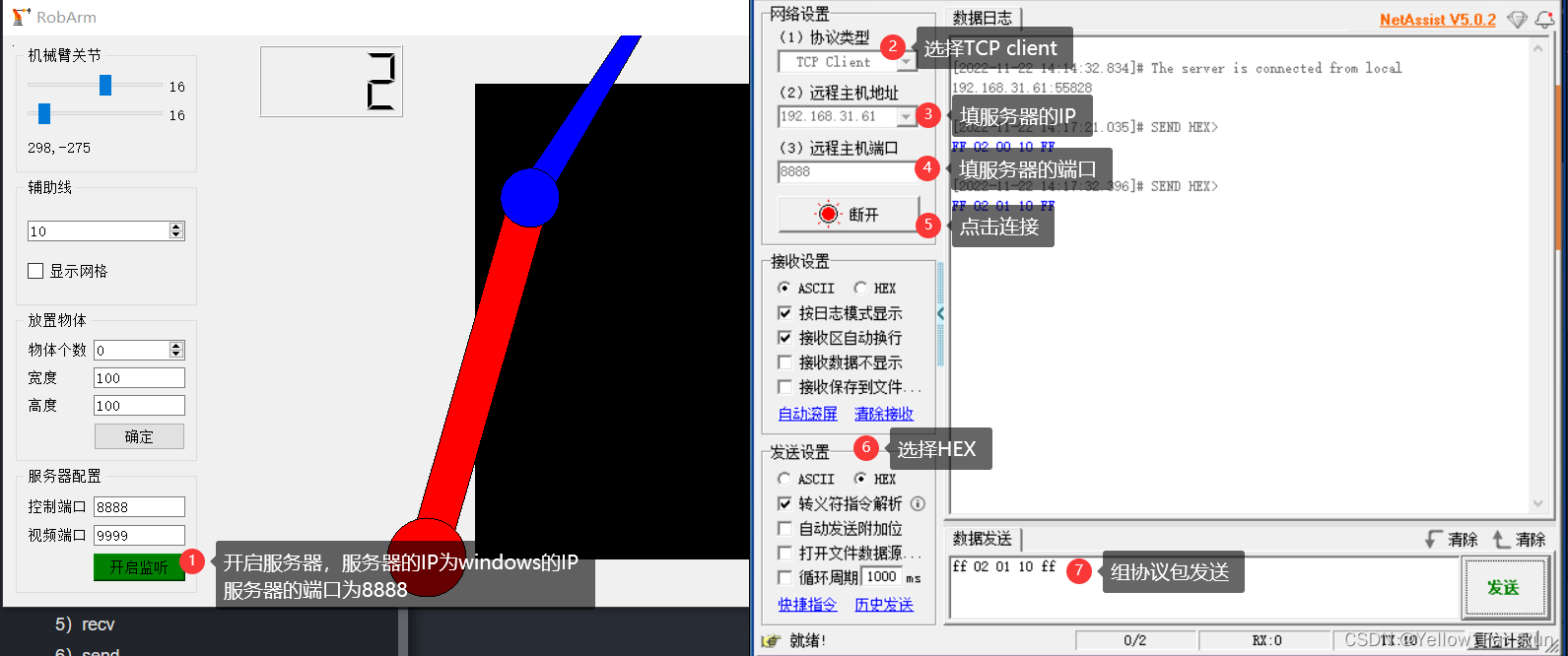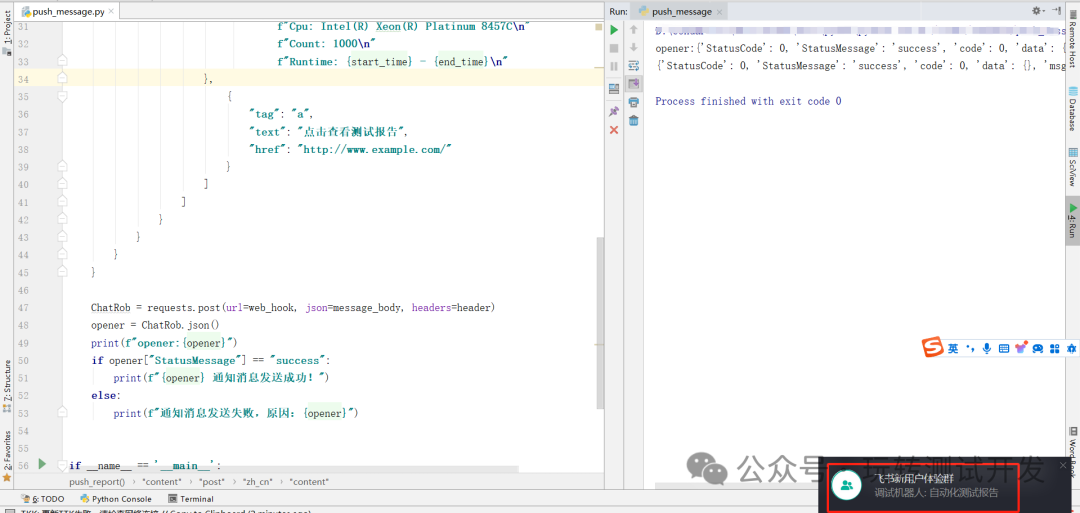STM32利用AES加密数据、解密数据
MD5在线工具
https://www.md5ma.com/md5-generator
Chapter1 STM32利用AES加密数据、解密数据
一、头文件
#ifndef _AES_H
#define _AES_H
// 以bit为单位的密钥长度,只能为 128,192 和 256 三种
#define AES_KEY_LENGTH 128
// 加解密模式
#define AES_MODE_ECB 0 // 电子密码本模式(一般模式)
#define AES_MODE_CBC 1 // 密码分组链接模式
#define AES_MODE AES_MODE_CBC
///
// 函数名: aes_init
// 描述: 初始化,在此执行扩展密钥操作。
// 输入参数: pKey -- 原始密钥,其长度必须为 AES_KEY_LENGTH/8 字节。
// 输出参数: 无。
// 返回值: 无。
///
void aes_init(const void *pKey);
//
// 函数名: aes_encrypt
// 描述: 加密数据
// 输入参数: pPlainText -- 明文,即需加密的数据,其长度为nDataLen字节。
// nDataLen -- 数据长度,以字节为单位,必须为AES_KEY_LENGTH/8的整倍数。
// pIV -- 初始化向量,如果使用ECB模式,可设为NULL。
// 输出参数: pCipherText -- 密文,即由明文加密后的数据,可以与pPlainText相同。
// 返回值: 无。
//
void aes_encrypt(const unsigned char *pPlainText, unsigned char *pCipherText,
unsigned int nDataLen, const unsigned char *pIV);
//
// 函数名: aes_decrypt
// 描述: 解密数据
// 输入参数: pCipherText -- 密文,即需解密的数据,其长度为nDataLen字节。
// nDataLen -- 数据长度,以字节为单位,必须为AES_KEY_LENGTH/8的整倍数。
// pIV -- 初始化向量,如果使用ECB模式,可设为NULL。
// 输出参数: pPlainText -- 明文,即由密文解密后的数据,可以与pCipherText相同。
// 返回值: 无。
//
void aes_decrypt( const unsigned char *pCipherText,unsigned char *pPlainText,
unsigned int nDataLen, const unsigned char *pIV);
#endif /* _AES_H */
二、源文件
#include "aes.h"
#include "string.h"
// 为了能针对C51进行优化,并且又使代码可用于ARM和PC等环境,
// 在非C51环境(没有定义__C51__)下需要把C51特定的关键字定义为空
#ifndef __C51__
#define code
#define data
#define idata
#define xdata
#define pdata
typedef unsigned char BOOL;
#else
typedef bit BOOL;
#endif
#define Nk (AES_KEY_LENGTH / 32) // 以“字”(4字节)为单位的密钥长度
#define Nb 4 // 以“字”(4字节)为单位的加解密数据块大小,固定为4
// Nr:加密的轮数
#if AES_KEY_LENGTH == 128
#define Nr 10
#elif AES_KEY_LENGTH == 192
#define Nr 12
#elif AES_KEY_LENGTH == 256
#define Nr 14
#else
#error AES_KEY_LENGTH must be 128, 192 or 256 BOOLs!
#endif
// GF(28) 多项式
#define BPOLY 0x1B // Lower 8 BOOLs of (x^8 + x^4 + x^3 + x + 1), ie. (x^4 + x^3 + x + 1).
/*****************************************************************************
* Typedef Enum 枚举定义
*****************************************************************************/
/*****************************************************************************
* Struct 数据结构定义
******************************************************************************/
/*****************************************************************************
* Local variable 局部变量
*****************************************************************************/
// AES子密钥表,当密钥长度为128位时,占用176字节空间
static xdata unsigned char g_roundKeyTable[4*Nb*(Nr+1)];
// 加密用的SBox
static code const unsigned char sBox[256] =
{
0x63, 0x7c, 0x77, 0x7b, 0xf2, 0x6b, 0x6f, 0xc5, 0x30, 0x01, 0x67, 0x2b, 0xfe, 0xd7, 0xab, 0x76,
0xca, 0x82, 0xc9, 0x7d, 0xfa, 0x59, 0x47, 0xf0, 0xad, 0xd4, 0xa2, 0xaf, 0x9c, 0xa4, 0x72, 0xc0,
0xb7, 0xfd, 0x93, 0x26, 0x36, 0x3f, 0xf7, 0xcc, 0x34, 0xa5, 0xe5, 0xf1, 0x71, 0xd8, 0x31, 0x15,
0x04, 0xc7, 0x23, 0xc3, 0x18, 0x96, 0x05, 0x9a, 0x07, 0x12, 0x80, 0xe2, 0xeb, 0x27, 0xb2, 0x75,
0x09, 0x83, 0x2c, 0x1a, 0x1b, 0x6e, 0x5a, 0xa0, 0x52, 0x3b, 0xd6, 0xb3, 0x29, 0xe3, 0x2f, 0x84,
0x53, 0xd1, 0x00, 0xed, 0x20, 0xfc, 0xb1, 0x5b, 0x6a, 0xcb, 0xbe, 0x39, 0x4a, 0x4c, 0x58, 0xcf,
0xd0, 0xef, 0xaa, 0xfb, 0x43, 0x4d, 0x33, 0x85, 0x45, 0xf9, 0x02, 0x7f, 0x50, 0x3c, 0x9f, 0xa8,
0x51, 0xa3, 0x40, 0x8f, 0x92, 0x9d, 0x38, 0xf5, 0xbc, 0xb6, 0xda, 0x21, 0x10, 0xff, 0xf3, 0xd2,
0xcd, 0x0c, 0x13, 0xec, 0x5f, 0x97, 0x44, 0x17, 0xc4, 0xa7, 0x7e, 0x3d, 0x64, 0x5d, 0x19, 0x73,
0x60, 0x81, 0x4f, 0xdc, 0x22, 0x2a, 0x90, 0x88, 0x46, 0xee, 0xb8, 0x14, 0xde, 0x5e, 0x0b, 0xdb,
0xe0, 0x32, 0x3a, 0x0a, 0x49, 0x06, 0x24, 0x5c, 0xc2, 0xd3, 0xac, 0x62, 0x91, 0x95, 0xe4, 0x79,
0xe7, 0xc8, 0x37, 0x6d, 0x8d, 0xd5, 0x4e, 0xa9, 0x6c, 0x56, 0xf4, 0xea, 0x65, 0x7a, 0xae, 0x08,
0xba, 0x78, 0x25, 0x2e, 0x1c, 0xa6, 0xb4, 0xc6, 0xe8, 0xdd, 0x74, 0x1f, 0x4b, 0xbd, 0x8b, 0x8a,
0x70, 0x3e, 0xb5, 0x66, 0x48, 0x03, 0xf6, 0x0e, 0x61, 0x35, 0x57, 0xb9, 0x86, 0xc1, 0x1d, 0x9e,
0xe1, 0xf8, 0x98, 0x11, 0x69, 0xd9, 0x8e, 0x94, 0x9b, 0x1e, 0x87, 0xe9, 0xce, 0x55, 0x28, 0xdf,
0x8c, 0xa1, 0x89, 0x0d, 0xbf, 0xe6, 0x42, 0x68, 0x41, 0x99, 0x2d, 0x0f, 0xb0, 0x54, 0xbb, 0x16
};
// 解密用的SBox
static code const unsigned char invSBox[256] =
{
0x52, 0x09, 0x6a, 0xd5, 0x30, 0x36, 0xa5, 0x38, 0xbf, 0x40, 0xa3, 0x9e, 0x81, 0xf3, 0xd7, 0xfb,
0x7c, 0xe3, 0x39, 0x82, 0x9b, 0x2f, 0xff, 0x87, 0x34, 0x8e, 0x43, 0x44, 0xc4, 0xde, 0xe9, 0xcb,
0x54, 0x7b, 0x94, 0x32, 0xa6, 0xc2, 0x23, 0x3d, 0xee, 0x4c, 0x95, 0x0b, 0x42, 0xfa, 0xc3, 0x4e,
0x08, 0x2e, 0xa1, 0x66, 0x28, 0xd9, 0x24, 0xb2, 0x76, 0x5b, 0xa2, 0x49, 0x6d, 0x8b, 0xd1, 0x25,
0x72, 0xf8, 0xf6, 0x64, 0x86, 0x68, 0x98, 0x16, 0xd4, 0xa4, 0x5c, 0xcc, 0x5d, 0x65, 0xb6, 0x92,
0x6c, 0x70, 0x48, 0x50, 0xfd, 0xed, 0xb9, 0xda, 0x5e, 0x15, 0x46, 0x57, 0xa7, 0x8d, 0x9d, 0x84,
0x90, 0xd8, 0xab, 0x00, 0x8c, 0xbc, 0xd3, 0x0a, 0xf7, 0xe4, 0x58, 0x05, 0xb8, 0xb3, 0x45, 0x06,
0xd0, 0x2c, 0x1e, 0x8f, 0xca, 0x3f, 0x0f, 0x02, 0xc1, 0xaf, 0xbd, 0x03, 0x01, 0x13, 0x8a, 0x6b,
0x3a, 0x91, 0x11, 0x41, 0x4f, 0x67, 0xdc, 0xea, 0x97, 0xf2, 0xcf, 0xce, 0xf0, 0xb4, 0xe6, 0x73,
0x96, 0xac, 0x74, 0x22, 0xe7, 0xad, 0x35, 0x85, 0xe2, 0xf9, 0x37, 0xe8, 0x1c, 0x75, 0xdf, 0x6e,
0x47, 0xf1, 0x1a, 0x71, 0x1d, 0x29, 0xc5, 0x89, 0x6f, 0xb7, 0x62, 0x0e, 0xaa, 0x18, 0xbe, 0x1b,
0xfc, 0x56, 0x3e, 0x4b, 0xc6, 0xd2, 0x79, 0x20, 0x9a, 0xdb, 0xc0, 0xfe, 0x78, 0xcd, 0x5a, 0xf4,
0x1f, 0xdd, 0xa8, 0x33, 0x88, 0x07, 0xc7, 0x31, 0xb1, 0x12, 0x10, 0x59, 0x27, 0x80, 0xec, 0x5f,
0x60, 0x51, 0x7f, 0xa9, 0x19, 0xb5, 0x4a, 0x0d, 0x2d, 0xe5, 0x7a, 0x9f, 0x93, 0xc9, 0x9c, 0xef,
0xa0, 0xe0, 0x3b, 0x4d, 0xae, 0x2a, 0xf5, 0xb0, 0xc8, 0xeb, 0xbb, 0x3c, 0x83, 0x53, 0x99, 0x61,
0x17, 0x2b, 0x04, 0x7e, 0xba, 0x77, 0xd6, 0x26, 0xe1, 0x69, 0x14, 0x63, 0x55, 0x21, 0x0c, 0x7d
};
///
// 函数名: rotation_word
// 描述: 对一个“字”数据进行循环右移。
// 输入参数: pWord -- 要右移的4字节数据。
// 输出参数: pWord -- 右移后的4字节数据。
// 返回值: 无。
///
static void rotation_word(unsigned char *pWord)
{
unsigned char temp = pWord[0];
pWord[0] = pWord[1];
pWord[1] = pWord[2];
pWord[2] = pWord[3];
pWord[3] = temp;
}
///
// 函数名: xor_bytes
// 描述: 批量异或两组数据。
// 输入参数: pData1 -- 要异或的第一组数据。
// pData1 -- 要异或的第二组数据。
// nCount -- 要异或的数据长度。
// 输出参数: pData1 -- 异或后的结果。
// 返回值: 无。
///
static void xor_bytes(unsigned char *pData1, const unsigned char *pData2, unsigned char nCount)
{
unsigned char i;
for (i = 0; i < nCount; i++)
{
pData1[i] ^= pData2[i];
}
}
///
// 函数名: AddRoundKey
// 描述: 把 中间状态数据 加上(异或)子密钥,数据长度为16字节。
// 输入参数: pState -- 状态数据。
// pRoundKey -- 子密钥数据。
// 输出参数: pState -- 加上子密钥后的状态数据。
// 返回值: 无。
///
// static void AddRoundKey(unsigned char *pState, const unsigned char *pRoundKey)
// {
// xor_bytes(pState, pRoundKey, 4*Nb);
// }
// AddRoundKey的宏形式,比函数形式可以节省4字节的data数据
#define AddRoundKey(pState, pRoundKey) \
xor_bytes((pState), (pRoundKey), 4*Nb)
///
// 函数名: sub_bytes
// 描述: 通过S盒子置换状态数据。
// 输入参数: pState -- 状态数据。
// nCount -- 状态数据长度。
// bInvert -- 是否使用反向S盒子(解密时使用)。
// 输出参数: pState -- 置换后的状态数据。
// 返回值: 无。
///
static void sub_bytes(unsigned char *pState, unsigned char nCount, BOOL bInvert)
{
unsigned char i;
const unsigned char code *pSBox = bInvert ? invSBox : sBox;
for (i = 0; i < nCount; i++)
{
pState[i] = pSBox[pState[i]];
}
}
///
// 函数名: shift_rows
// 描述: 把状态数据移行。
// 输入参数: pState -- 状态数据。
// bInvert -- 是否反向移行(解密时使用)。
// 输出参数: pState -- 移行后的状态数据。
// 返回值: 无。
///
static void shift_rows(unsigned char *pState, BOOL bInvert)
{
// 注意:状态数据以列形式存放!
unsigned char r; // row, 行
unsigned char c; // column,列
unsigned char temp;
unsigned char rowData[4];
for (r = 1; r < 4; r++)
{
// 备份一行数据
for (c = 0; c < 4; c++)
{
rowData[c] = pState[r + 4*c];
}
temp = bInvert ? (4 - r) : r;
for (c = 0; c < 4; c++)
{
pState[r + 4*c] = rowData[(c + temp) % 4];
}
}
}
///
// 函数名: gf_mult_by02
// 描述: 在GF(28)域的 乘2 运算。
// 输入参数: num -- 乘数。
// 输出参数: 无。
// 返回值: num乘以2的结果。
///
static unsigned char gf_mult_by02(unsigned char num)
{
if ((num & 0x80) == 0)
{
num = num << 1;
}
else
{
num = (num << 1) ^ BPOLY;
}
return num;
}
///
// 函数名: mix_columns
// 描述: 混合状态各列数据。
// 输入参数: pState -- 状态数据。
// bInvert -- 是否反向混合(解密时使用)。
// 输出参数: pState -- 混合列后的状态数据。
// 返回值: 无。
///
static void mix_columns(unsigned char *pState, BOOL bInvert)
{
unsigned char i;
unsigned char temp;
unsigned char a0Pa2_M4; // 4(a0 + a2)
unsigned char a1Pa3_M4; // 4(a1 + a3)
unsigned char result[4];
for (i = 0; i < 4; i++, pState += 4)
{
// b0 = 2a0 + 3a1 + a2 + a3
// = (a0 + a1 + a2 + a3) + 2(a0 + a1) + a0
temp = pState[0] ^ pState[1] ^ pState[2] ^ pState[3];
result[0] = temp ^ pState[0] ^ gf_mult_by02((unsigned char) (pState[0] ^ pState[1]));
result[1] = temp ^ pState[1] ^ gf_mult_by02((unsigned char) (pState[1] ^ pState[2]));
result[2] = temp ^ pState[2] ^ gf_mult_by02((unsigned char) (pState[2] ^ pState[3]));
result[3] = temp ^ pState[3] ^ gf_mult_by02((unsigned char) (pState[3] ^ pState[0]));
if (bInvert)
{
// b0' = 14a0 + 11a1 + 13a2 + 9a3
// = (a0 + a1 + a2 + a3) + 2(a0 + a1) + a0 (这部分为b0)
// + 2(4(a0 + a2) + 4(a1 + a3))
// + 4(a0 + a2)
a0Pa2_M4 = gf_mult_by02(gf_mult_by02((unsigned char) (pState[0] ^ pState[2])));
a1Pa3_M4 = gf_mult_by02(gf_mult_by02((unsigned char) (pState[1] ^ pState[3])));
temp = gf_mult_by02((unsigned char) (a0Pa2_M4 ^ a1Pa3_M4));
result[0] ^= temp ^ a0Pa2_M4;
result[1] ^= temp ^ a1Pa3_M4;
result[2] ^= temp ^ a0Pa2_M4;
result[3] ^= temp ^ a1Pa3_M4;
}
memcpy(pState, result, 4);
}
}
///
// 函数名: block_encrypt
// 描述: 对单块数据加密。
// 输入参数: pState -- 状态数据。
// 输出参数: pState -- 加密后的状态数据。
// 返回值: 无。
///
static void block_encrypt(unsigned char *pState)
{
unsigned char i;
AddRoundKey(pState, g_roundKeyTable);
for (i = 1; i <= Nr; i++) // i = [1, Nr]
{
sub_bytes(pState, 4*Nb, 0);
shift_rows(pState, 0);
if (i != Nr)
{
mix_columns(pState, 0);
}
AddRoundKey(pState, &g_roundKeyTable[4*Nb*i]);
}
// 为了节省代码,合并到循化执行
// sub_bytes(pState, 4*Nb);
// shift_rows(pState, 0);
// AddRoundKey(pState, &g_roundKeyTable[4*Nb*Nr]);
}
///
// 函数名: block_decrypt
// 描述: 对单块数据解密。
// 输入参数: pState -- 状态数据。
// 输出参数: pState -- 解密后的状态数据。
// 返回值: 无。
///
static void block_decrypt(unsigned char *pState)
{
unsigned char i;
AddRoundKey(pState, &g_roundKeyTable[4*Nb*Nr]);
for (i = Nr; i > 0; i--) // i = [Nr, 1]
{
shift_rows(pState, 1);
sub_bytes(pState, 4*Nb, 1);
AddRoundKey(pState, &g_roundKeyTable[4*Nb*(i-1)]);
if (i != 1)
{
mix_columns(pState, 1);
}
}
// 为了节省代码,合并到循化执行
// shift_rows(pState, 1);
// sub_bytes(pState, 4*Nb, 1);
// AddRoundKey(pState, g_roundKeyTable);
}
/*****************************************************************************
* Global Functions 全局函数
******************************************************************************/
///
// 函数名: aes_init
// 描述: 初始化,在此执行扩展密钥操作。
// 输入参数: pKey -- 原始密钥,其长度必须为 AES_KEY_LENGTH/8 字节。
// 输出参数: 无。
// 返回值: 无。
///
void aes_init(const void *pKey)
{
// 扩展密钥
unsigned char i;
unsigned char *pRoundKey;
unsigned char Rcon[4] = {0x01, 0x00, 0x00, 0x00};
memcpy(g_roundKeyTable, pKey, 4*Nk);
pRoundKey = &g_roundKeyTable[4*Nk];
for (i = Nk; i < Nb*(Nr+1); pRoundKey += 4, i++)
{
memcpy(pRoundKey, pRoundKey - 4, 4);
if (i % Nk == 0)
{
rotation_word(pRoundKey);
sub_bytes(pRoundKey, 4, 0);
xor_bytes(pRoundKey, Rcon, 4);
Rcon[0] = gf_mult_by02(Rcon[0]);
}
else if (Nk > 6 && i % Nk == Nb)
{
sub_bytes(pRoundKey, 4, 0);
}
xor_bytes(pRoundKey, pRoundKey - 4*Nk, 4);
}
}
//
// 函数名: aes_encrypt
// 描述: 加密数据
// 输入参数: pPlainText -- 明文,即需加密的数据,其长度为nDataLen字节。
// nDataLen -- 数据长度,以字节为单位,必须为AES_KEY_LENGTH/8的整倍数。
// pIV -- 初始化向量,如果使用ECB模式,可设为NULL。
// 输出参数: pCipherText -- 密文,即由明文加密后的数据,可以与pPlainText相同。
// 返回值: 无。
//
void aes_encrypt(const unsigned char *pPlainText, unsigned char *pCipherText,
unsigned int nDataLen, const unsigned char *pIV)
{
unsigned int i;
if (pPlainText != pCipherText)
{
memcpy(pCipherText, pPlainText, nDataLen);
}
for (i = nDataLen/(4*Nb); i > 0 ; i--, pCipherText += 4*Nb)
{
#if AES_MODE == AES_MODE_CBC
xor_bytes(pCipherText, pIV, 4*Nb);
#endif
block_encrypt(pCipherText);
pIV = pCipherText;
}
}
//
// 函数名: aes_decrypt
// 描述: 解密数据
// 输入参数: pCipherText -- 密文,即需解密的数据,其长度为nDataLen字节。
// nDataLen -- 数据长度,以字节为单位,必须为AES_KEY_LENGTH/8的整倍数。
// pIV -- 初始化向量,如果使用ECB模式,可设为NULL。
// 输出参数: pPlainText -- 明文,即由密文解密后的数据,可以与pCipherText相同。
// 返回值: 无。
//
void aes_decrypt( const unsigned char *pCipherText,unsigned char *pPlainText,
unsigned int nDataLen, const unsigned char *pIV)
{
unsigned int i;
if (pPlainText != pCipherText)
{
memcpy(pPlainText, pCipherText, nDataLen);
}
// 从最后一块数据开始解密,这样不用开辟空间来保存IV
pPlainText += nDataLen - 4*Nb;
for (i = nDataLen/(4*Nb); i > 0 ; i--, pPlainText -= 4*Nb)
{
block_decrypt(pPlainText);
#if AES_MODE == AES_MODE_CBC
if (i == 1)
{// 最后一块数据
xor_bytes(pPlainText, pIV, 4*Nb);
}
else
{
xor_bytes(pPlainText, pPlainText - 4*Nb, 4*Nb);
}
#endif
}
}
三、使用
使用注意点:
1、AES_KEY_LENGTH取值只能是128,192 和 256
2、密钥和向量表长度为AES_KEY_LENGTH/8个字节
3、加密、解密数据长度为AES_KEY_LENGTH/8的整数倍字节
int main(void)
{
u8 buf[16],saveBuf[16],descryptBuf[16];
u16 i;
unsigned char AES128key[16] = "123456789abcdefa";//秘钥
unsigned char AES_IV[16]= "0102030405123456";//向量表
delay_init(168); //初始化延时函数
LED_Init(); //初始化LED端口
aes_init(AES128key);//AES初始化
for(i=0;i<sizeof(buf);i++)
{
buf[i]=i;
}
while(1)
{
aes_encrypt(buf,saveBuf,sizeof(buf), AES_IV);
aes_decrypt(saveBuf,descryptBuf, sizeof(buf), AES_IV);
GPIO_ResetBits(GPIOF,GPIO_Pin_9); //LED0对应引脚GPIOF.9拉低,亮 等同LED0=0;
GPIO_SetBits(GPIOF,GPIO_Pin_10); //LED1对应引脚GPIOF.10拉高,灭 等同LED1=1;
delay_ms(500); //延时300ms
GPIO_SetBits(GPIOF,GPIO_Pin_9); //LED0对应引脚GPIOF.0拉高,灭 等同LED0=1;
GPIO_ResetBits(GPIOF,GPIO_Pin_10); //LED1对应引脚GPIOF.10拉低,亮 等同LED1=0;
delay_ms(500); //延时300ms
}
}
Chapter2 stm32 的 md5计算函数
原文链接:https://blog.csdn.net/joyopirate/article/details/122006598
假如你用的是stm32cubeide,可以考虑使用官方的库。使用方法可以看我写的这个【加密库使用方法】
参考:
https://www.cnblogs.com/xuning/p/4686021.html
根据上面那个网站提供方法稍加改造得到的
#define ROTATELEFT(value, bits) (((value) << (bits)) | ((value) >> (32 - (bits))))
/**
* @desc: convert message and mes_bkp string into integer array and store them in w
*/
static void md5_process_part1(uint32_t *w, unsigned char *message, uint32_t *pos, uint32_t mes_len, const unsigned char *mes_bkp)
{
uint32_t i; // used in for loop
for(i = 0; i <= 15; i++)
{
int32_t count = 0;
while(*pos < mes_len && count <= 24)
{
w[i] += (((uint32_t)message[*pos]) << count);
(*pos)++;
count += 8;
}
while(count <= 24)
{
w[i] += (((uint32_t)mes_bkp[*pos - mes_len]) << count);
(*pos)++;
count += 8;
}
}
}
/**
* @desc: start encryption based on w
*/
static void md5_process_part2(uint32_t abcd[4], uint32_t *w, const uint32_t k[64], const uint32_t s[64])
{
uint32_t i; // used in for loop
uint32_t a = abcd[0];
uint32_t b = abcd[1];
uint32_t c = abcd[2];
uint32_t d = abcd[3];
uint32_t f = 0;
uint32_t g = 0;
for(i = 0; i < 64; i++)
{
if(i >= 0 && i <= 15)
{
f = (b & c) | ((~b) & d);
g = i;
}else if(i >= 16 && i <= 31)
{
f = (d & b) | ((~d) & c);
g = (5 * i + 1) % 16;
}else if(i >= 32 && i <= 47)
{
f = b ^ c ^ d;
g = (3 * i + 5) % 16;
}else if(i >= 48 && i <= 63)
{
f = c ^ (b | (~d));
g = (7 * i) % 16;
}
uint32_t temp = d;
d = c;
c = b;
b = ROTATELEFT((a + f + k[i] + w[g]), s[i]) + b;
a = temp;
}
abcd[0] += a;
abcd[1] += b;
abcd[2] += c;
abcd[3] += d;
}
static const uint32_t k_table[]={
0xd76aa478,0xe8c7b756,0x242070db,0xc1bdceee,
0xf57c0faf,0x4787c62a,0xa8304613,0xfd469501,0x698098d8,
0x8b44f7af,0xffff5bb1,0x895cd7be,0x6b901122,0xfd987193,
0xa679438e,0x49b40821,0xf61e2562,0xc040b340,0x265e5a51,
0xe9b6c7aa,0xd62f105d,0x02441453,0xd8a1e681,0xe7d3fbc8,
0x21e1cde6,0xc33707d6,0xf4d50d87,0x455a14ed,0xa9e3e905,
0xfcefa3f8,0x676f02d9,0x8d2a4c8a,0xfffa3942,0x8771f681,
0x6d9d6122,0xfde5380c,0xa4beea44,0x4bdecfa9,0xf6bb4b60,
0xbebfbc70,0x289b7ec6,0xeaa127fa,0xd4ef3085,0x04881d05,
0xd9d4d039,0xe6db99e5,0x1fa27cf8,0xc4ac5665,0xf4292244,
0x432aff97,0xab9423a7,0xfc93a039,0x655b59c3,0x8f0ccc92,
0xffeff47d,0x85845dd1,0x6fa87e4f,0xfe2ce6e0,0xa3014314,
0x4e0811a1,0xf7537e82,0xbd3af235,0x2ad7d2bb,0xeb86d391
};
static const uint32_t s_table[]={
7,12,17,22,7,12,17,22,7,12,17,22,7,
12,17,22,5,9,14,20,5,9,14,20,5,9,14,20,5,9,14,20,
4,11,16,23,4,11,16,23,4,11,16,23,4,11,16,23,6,10,
15,21,6,10,15,21,6,10,15,21,6,10,15,21
};
int32_t cal_md5(unsigned char *result, unsigned char *data, int length){
if (result == NULL)
{
return 1;
}
uint32_t w[16];
uint32_t i; // used in for loop
uint32_t mes_len = length;
uint32_t looptimes = (mes_len + 8) / 64 + 1;
uint32_t abcd[] = {0x67452301, 0xEFCDAB89, 0x98BADCFE, 0x10325476};
uint32_t pos = 0; // position pointer for message
uint32_t bkp_len = 64 * looptimes - mes_len; // 经过计算发现不超过72
// unsigned char *bkp_mes = (unsigned char *)calloc(1, bkp_len);
unsigned char bkp_mes[80];
for(int i = 0; i < 80; i++) //初始化
{
bkp_mes[i] = 0;
}
bkp_mes[0] = (unsigned char)(0x80);
uint64_t mes_bit_len = ((uint64_t)mes_len) * 8;
for(i = 0; i < 8; i++)
{
bkp_mes[bkp_len-i-1] = (unsigned char)((mes_bit_len & (0x00000000000000FF << (8 * (7 - i)))) >> (8 * (7 - i)));
}
for(i = 0; i < looptimes; i++)
{
for(int j = 0; j < 16; j++) //初始化
{
w[j] = 0x00000000;
}
md5_process_part1(w, data, &pos, mes_len, bkp_mes); // compute w
md5_process_part2(abcd, w, k_table, s_table); // calculate md5 and store the result in abcd
}
for(int i = 0; i < 16; i++)
{
result[i] = ((unsigned char*)abcd)[i];
}
return 0;
}
Chapter3 STM32 应用程序加密的一种设计方案
原文链接:https://blog.csdn.net/u010058695/article/details/101014672
前言
STM32编译后的代码存在FLASH中,通过外部工具可以读出来全部数据,一旦硬件抄板一样,再将FLASH数据全部拷贝至抄板单片机中,既可以完全实现硬件和软件功能抄袭。因此,需要对自己的应用程序加密,即使被抄板和读取FLASH数据,拷贝过后仍然无法执行相应的功能。【ps:没有解不开的单片机,主要看解密的经济效益】
主要思路:利用每个芯片的96位唯一ID,进行一定的计算和单向加密,得到唯一的应用AppKey并保存至FLASH,运行APP时读取该FLASH位置的AppKey,并与计算得到的AppKey比较是否相同,如果相同则正常运行,不相同则退出。
因此,在正确运行APP之前,需要保证FLASH保存有AppKey,可以在设备出厂前提前通过代码方式写入FLASH,再烧写正常的APP代码。为了减小代码烧写的工作量,采用IAP的方式实现自动出厂配置,方案包括三个工程:BootLoader,Encrypt,APP。三个工程在FLASH中的内存分配与OTA-IAP相同。
一、计算AppKey
step1 :为避免出现UID_BASE的明文,在读取UID时,对其地址进行一定的简单运算,再读取UID。
#define ADDRSEED (0x20170620)
#define METHORDADDR (ADDRSEED^1+1)
#define METHORDEUID (ADDRSEED|0x12345678)
volatile const uint32_t uidaddr[3] = {UID_BASE+METHORDADDR,UID_BASE+4-METHORDADDR,UID_BASE+8+METHORDADDR};
//get uid, by calc uidbase
//uid: ptr, 96byte length
static void Getuid(volatile uint32_t *uid)
{
volatile uint32_t addrtemp;
addrtemp = uidaddr[0] - METHORDADDR;
uid[0] = *(volatile uint32_t*)(addrtemp);
addrtemp = uidaddr[1] + METHORDADDR;
uid[1] = *(volatile uint32_t*)(addrtemp);
addrtemp = uidaddr[2] - METHORDADDR;
uid[2] = *(volatile uint32_t*)(addrtemp);
}
step2 :对UID进一步简单加密。
//encrypt uid
//euid: ptr, 96byte length
static void Encryptuid(volatile uint32_t *euid)
{
uint32_t uid[3];
Getuid(uid);
euid[0] = uid[0] + METHORDEUID;
euid[0] ^= ADDRSEED;
euid[1] = uid[1] + METHORDEUID;
euid[1] ^= ADDRSEED;
euid[2] = uid[2] + METHORDEUID;
euid[2] ^= ADDRSEED;
}
step3 :对EncryptUID计算MD5,计算128bit单向散列值。
//generate md5 by euid
//key: ptr, 16byte length
void GenerateMD5(uint8_t *md5)
{
uint32_t *euid;
Encryptuid(euid);
MD5_Init(&Context);
MD5_Update(&Context,(uint8_t *)euid,96);
MD5_Final(&Context,md5);
}
step4 :根据FLASH页容量大小,将MD5扩充至1024Byte,采用随机数扩充。
//generate key
//key: ptr, 1024 length, md5 extend to 1024
void GenerateKey(uint8_t *key)
{
uint16_t i,j;
uint8_t md5val[16];
GenerateMD5(md5val);
j = 0;
for(i = 0; i < 1024; i++)
{
if(i%64 == 0)
{
key[i] = md5val[j++];
}
else
{
srand1(HAL_GetTick());
key[i] = randr(0,0xFF);
}
}
}
二、自动配置流程
Encrypt工程代码只在出厂时运行一次,目的是利用UID产生AppKey,并将其提前写入指定FLASH中,因此,该段代码执行一次后将擦除。可设置Encrypt在APPA区中运行,利用IAP功能,将APPB区的APP固件在执行完Encrypt固件后,搬移至APPA区。
具体地,出厂自动配置密钥流程如下:
Step1:上电启动单片机,首先执行BootLoader程序。
Step2:BootLoader读取Parameter参数区,此时参数区设置为无升级任务,BootLoader执行APPA区的代码,进入 Step3 。存在升级任务时,执行 Step6, Step7 。
Step3:BootLoader跳转至APPA,执行Encrypt代码,根据UID计算AppKey,执行 Step4 和 Step5 。
Step4:将计算的AppKey存入Parameter区指定的位置,并写入升级标志和APPB区相关固件参数。
Step5:重启单片机,进入BootLoader。
Step6:清除升级任务标志。
Step7:拷贝APPB代码至APPA区,即擦除Encrypt代码,最后执行重启进入 Step5 ,重启后运行真正的APP代码。
三、出厂固件合并
出厂前需要在STM32中烧写BootLoader、Encrypt和APP三份Hex固件,加大了时间开销,三份Hex固件存在FlASH的不同位置,地址容易出错。因此,可将三份Hex进行合并成一个Hex,进行一次烧写,按照自动配置流程完成加密和代码搬运工作。
BootLoader工程在程序一开始运行,其地址和空间大小分配仍然按照0x08000000和20kB分配,编译生成boot.hex。Encrypt工程和APP都在APPA区运行,因此,两者地址和空间大小分配为相同的0x08005000和50kB。APP.Hex只是保存在APPB区,带加密执行完成后通知Bootloader进行搬移。
出厂固件按照boot.Hex,encrypt.Hex,app.Hex的顺序合并,打开Hex文件,分别用后一个文件的全部内容替换前一个文件的最后一行,保存为hex格式就可以。
个人总结
头文件AppCryptography.h
#ifndef __BSP_APPCRYPTOGRAPHY_H__
#define __BSP_APPCRYPTOGRAPHY_H__
#include <stdint.h>
/**
* 函数功能: 计算一组数据的MD5值
* 输入参数: data:指向待计算数据的首地址;length:待计算数据的长度;
* 返 回 值: result:MD5结果返回值,16字节,128位
* 说 明: 无
*/
int32_t cal_md5(unsigned char *result, unsigned char *data, int length);
void Getuid(void);
#endif
#include "AppCryptography/AppCryptography.h"
#include <stdio.h>
#include <stdlib.h>
#include <stm32f410tx.h>
#define ROTATELEFT(value, bits) (((value) << (bits)) | ((value) >> (32 - (bits))))
#define ADDRSEED (0x20170620)
#define METHORDADDR (ADDRSEED^1+1)
#define METHORDEUID (ADDRSEED|0x12345678)
volatile const uint32_t uidaddr[3] = {UID_BASE+METHORDADDR,UID_BASE+4-METHORDADDR,UID_BASE+8+METHORDADDR};
uint32_t uid[3] = {0x00,0x00,0x00};
//get uid, by calc uidbase
//uid: ptr, 96byte length
void Getuid(void)
//void Getuid(volatile uint32_t *uid)
{
// volatile uint32_t addrtemp;
// addrtemp = uidaddr[0] - METHORDADDR;
// uid[0] = *(volatile uint32_t*)(addrtemp);
// addrtemp = uidaddr[1] + METHORDADDR;
// uid[1] = *(volatile uint32_t*)(addrtemp);
// addrtemp = uidaddr[2] - METHORDADDR;
// uid[2] = *(volatile uint32_t*)(addrtemp);
HAL_GetUID(uid); //STM32不同系列,UID_BASE不一样
}
源文件AppCryptography.c
/**
* @desc: convert message and mes_bkp string into integer array and store them in w
*/
static void md5_process_part1(uint32_t *w, unsigned char *message, uint32_t *pos, uint32_t mes_len, const unsigned char *mes_bkp)
{
uint32_t i; // used in for loop
for(i = 0; i <= 15; i++)
{
int32_t count = 0;
while(*pos < mes_len && count <= 24)
{
w[i] += (((uint32_t)message[*pos]) << count);
(*pos)++;
count += 8;
}
while(count <= 24)
{
w[i] += (((uint32_t)mes_bkp[*pos - mes_len]) << count);
(*pos)++;
count += 8;
}
}
}
/**
* @desc: start encryption based on w
*/
static void md5_process_part2(uint32_t abcd[4], uint32_t *w, const uint32_t k[64], const uint32_t s[64])
{
uint32_t i; // used in for loop
uint32_t a = abcd[0];
uint32_t b = abcd[1];
uint32_t c = abcd[2];
uint32_t d = abcd[3];
uint32_t f = 0;
uint32_t g = 0;
for(i = 0; i < 64; i++)
{
if(i >= 0 && i <= 15)
{
f = (b & c) | ((~b) & d);
g = i;
}else if(i >= 16 && i <= 31)
{
f = (d & b) | ((~d) & c);
g = (5 * i + 1) % 16;
}else if(i >= 32 && i <= 47)
{
f = b ^ c ^ d;
g = (3 * i + 5) % 16;
}else if(i >= 48 && i <= 63)
{
f = c ^ (b | (~d));
g = (7 * i) % 16;
}
uint32_t temp = d;
d = c;
c = b;
b = ROTATELEFT((a + f + k[i] + w[g]), s[i]) + b;
a = temp;
}
abcd[0] += a;
abcd[1] += b;
abcd[2] += c;
abcd[3] += d;
}
static const uint32_t k_table[]={
0xd76aa478,0xe8c7b756,0x242070db,0xc1bdceee,
0xf57c0faf,0x4787c62a,0xa8304613,0xfd469501,0x698098d8,
0x8b44f7af,0xffff5bb1,0x895cd7be,0x6b901122,0xfd987193,
0xa679438e,0x49b40821,0xf61e2562,0xc040b340,0x265e5a51,
0xe9b6c7aa,0xd62f105d,0x02441453,0xd8a1e681,0xe7d3fbc8,
0x21e1cde6,0xc33707d6,0xf4d50d87,0x455a14ed,0xa9e3e905,
0xfcefa3f8,0x676f02d9,0x8d2a4c8a,0xfffa3942,0x8771f681,
0x6d9d6122,0xfde5380c,0xa4beea44,0x4bdecfa9,0xf6bb4b60,
0xbebfbc70,0x289b7ec6,0xeaa127fa,0xd4ef3085,0x04881d05,
0xd9d4d039,0xe6db99e5,0x1fa27cf8,0xc4ac5665,0xf4292244,
0x432aff97,0xab9423a7,0xfc93a039,0x655b59c3,0x8f0ccc92,
0xffeff47d,0x85845dd1,0x6fa87e4f,0xfe2ce6e0,0xa3014314,
0x4e0811a1,0xf7537e82,0xbd3af235,0x2ad7d2bb,0xeb86d391
};
static const uint32_t s_table[]={
7,12,17,22,7,12,17,22,7,12,17,22,7,
12,17,22,5,9,14,20,5,9,14,20,5,9,14,20,5,9,14,20,
4,11,16,23,4,11,16,23,4,11,16,23,4,11,16,23,6,10,
15,21,6,10,15,21,6,10,15,21,6,10,15,21
};
/* 函数体 --------------------------------------------------------------------*/
/**
* 函数功能: 计算一组数据的MD5值
* 输入参数: data:指向待计算数据的首地址;length:待计算数据的长度;
* 返 回 值: result:MD5结果返回值,16字节,128位
* 说 明: 无
*/
int32_t cal_md5(unsigned char *result, unsigned char *data, int length){
if (result == NULL)
{
return 1;
}
uint32_t w[16];
uint32_t i; // used in for loop
uint32_t mes_len = length;
uint32_t looptimes = (mes_len + 8) / 64 + 1;
uint32_t abcd[] = {0x67452301, 0xEFCDAB89, 0x98BADCFE, 0x10325476};
uint32_t pos = 0; // position pointer for message
uint32_t bkp_len = 64 * looptimes - mes_len; // 经过计算发现不超过72
// unsigned char *bkp_mes = (unsigned char *)calloc(1, bkp_len);
unsigned char bkp_mes[80];
for(int i = 0; i < 80; i++) //初始化
{
bkp_mes[i] = 0;
}
bkp_mes[0] = (unsigned char)(0x80);
uint64_t mes_bit_len = ((uint64_t)mes_len) * 8;
for(i = 0; i < 8; i++)
{
bkp_mes[bkp_len-i-1] = (unsigned char)((mes_bit_len & (0x00000000000000FF << (8 * (7 - i)))) >> (8 * (7 - i)));
}
for(i = 0; i < looptimes; i++)
{
for(int j = 0; j < 16; j++) //初始化
{
w[j] = 0x00000000;
}
md5_process_part1(w, data, &pos, mes_len, bkp_mes); // compute w
md5_process_part2(abcd, w, k_table, s_table); // calculate md5 and store the result in abcd
}
for(int i = 0; i < 16; i++)
{
result[i] = ((unsigned char*)abcd)[i];
}
return 0;
}
具体使用方法
uint8_t data1[16] = "abcdefg012345678";
uint8_t data_result[16] ={0};
int k = sizeof(data1);
cal_md5(data_result, data1, k);

